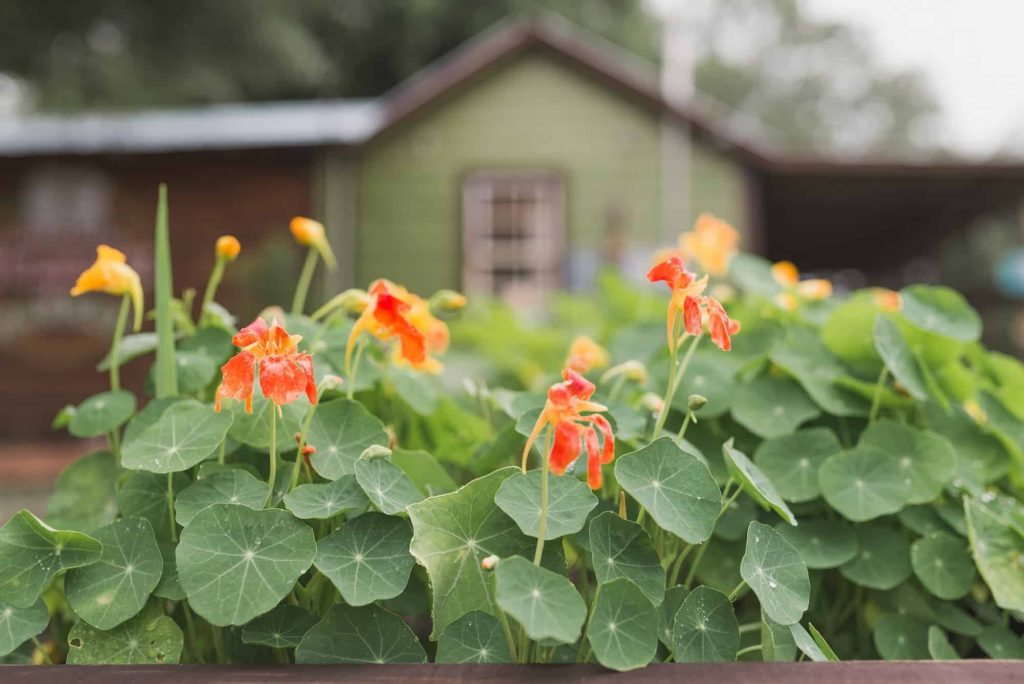Nasturtiums offer great support to plants that are susceptible to pests like aphids.
When considering flowers to grow in your garden, add nasturtium to your list. It is a climbing plant that needs a structure like a trellis to stand. Nasturtiums are more beautiful when allowed to spread throughout your garden.
Nasturtium alongside its pest repelling attribute is good for landscape and decorations. It is rich in vitamins and its edibility qualifies it to be used for different meals. There are varieties of nasturtiums and what is common to them all is their beautiful colors that catch the eye. They can be used for interior decorations.
Some of the best plants to grow near nasturtiums are pumpkins, corn, raspberries, tomatoes, squash, marigold, pepper, eggplants, cucumbers, and sage. Nasturtium makes an excellent flowering companion plant with any plant, the only plant to not grow near it is fennel, which doesn’t do well with most garden plants either.
Planting nasturtiums with other plants boost their yield, repels pests from them, enhances their flavor, and attracts beneficial insects to them. Companion planting focuses on how plants can be beneficial to other plants. In this case, the attention is on nasturtiums. It is self-sacrificing and takes the pain for plants that get attracted by pests.
12 Best Nasturtium Companion Plants
Plants that are often damaged by pests like aphids should be planted with Nasturtium. Nasturtium is a good repellent for aphids and other dangerous pests that destroy crop yield. It also invites pollinators that will help in pollinating their flowers.
Planting Nasturtium with any plant is a win-win. Nasturtiums loved to be sacrificed for other plants and that’s what happens when you use it as a companion. Keep reading to learn crops that will benefit from Nasturtium.
1. Pumpkins
Cucurbits are good companions for Nasturtium. Colorful pumpkins attract not only children but pests too. These pests can disfigure their leaves and fruit. Planting Nasturtium is the best decision you can make for your pumpkin vegetable. Nasturtium invites ladybugs to feed on pests that pose danger to your pumpkin. If you want to carve beautiful pumpkins for Halloween, plant some Nasturtium flowers in your garden.
2. Raspberries
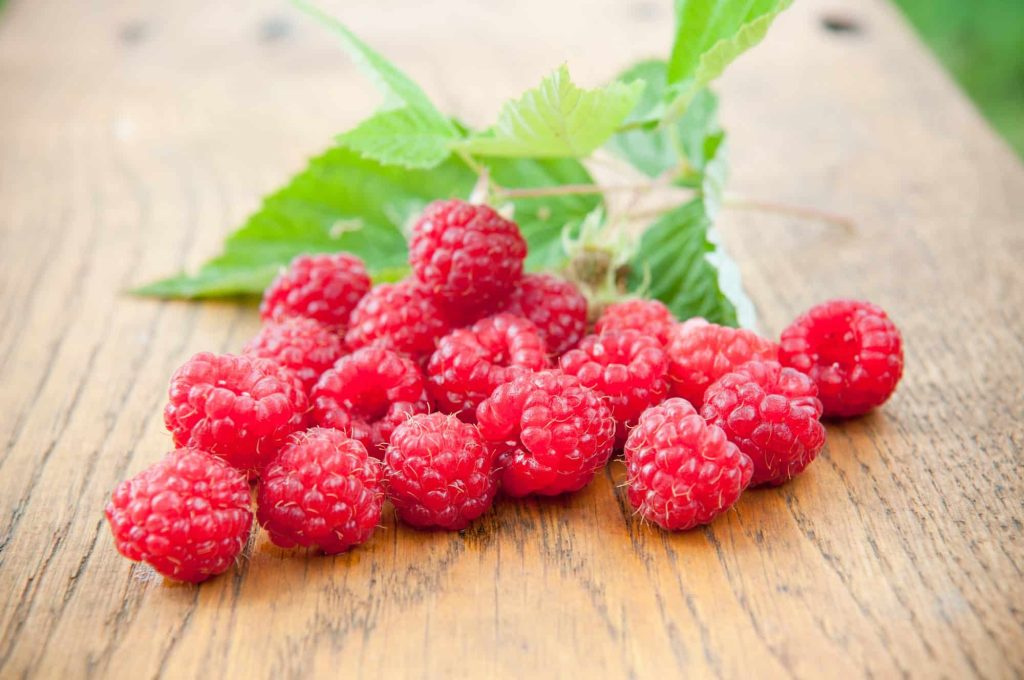
Nasturtiums take care of the major garden pests, aphids, and squash bugs. These pests can disfigure your plant beyond recognition. Raspberry is delicious food for squash bugs. They suck its juice depleting raspberry of its nutrients. Growing nasturtium some inches away from your raspberry plant deters these bugs.
3. Zucchini
Aphids are popular visitors in your vegetable garden. They damage almost every vegetable plant. One way to curb their activities is by companion planting it with a plant that attracts its predators better still keeps the pests at bay. Nasturtium is a trap crop that can protect zucchini. It repels aphids from zucchini and enhances its flavor.
4. Lettuce
Your garden can be swarmed with aphids in the presence of a vegetable plant. Vegetable plants are delicious to both humans and pests. Protect your lettuce leaves from being damaged by situating some nasturtium flowers close to them. Calendula performs the Same function as nasturtiums. So, you can try planting them together.
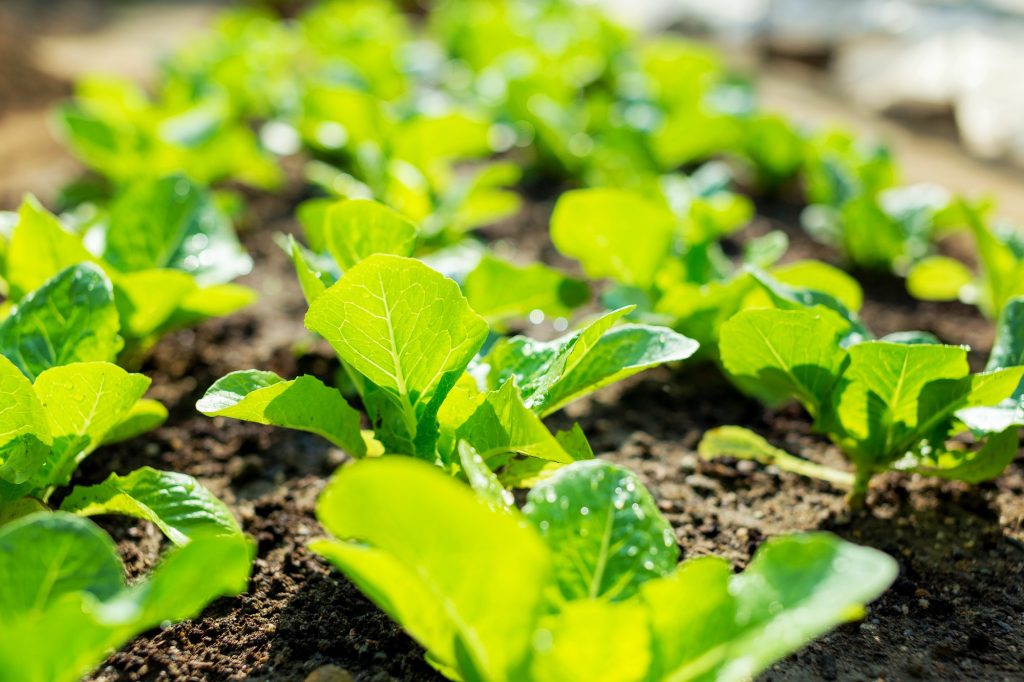
5. Corn
Corn is an open book for pests. Aphids easily get attracted to corn plants and destroy their fruits. Aphids can be controlled on the farm by positioning some nasturtium flowers beside them. If you are left with little space in your garden, then you can sprinkle some nasturtium plants close to your corn.
6. Sage
This is one of the aromatic herbs that can’t repel pests. The best companion for sage is a nasturtium. Nasturtium will beautify your garden with its beautiful colors and deter whiteflies from sage. Sage attracts whiteflies which can be controlled by planting nasturtium in your garden.
7. Eggplants
Eggplants or Aubergine are not exempted from aphid’s attack. They bore into and feed on its fleshy skin. Nasturtiums can protect your eggplant from aphids.
8. Pepper
Pepper plants are fed on by aphids and bugs. Instead of resolving to pesticides, go for the natural and best method of repelling pests which is companion planting. Growing nasturtiums with pepper in your garden deter squash bugs and aphids from your capsicum plant.
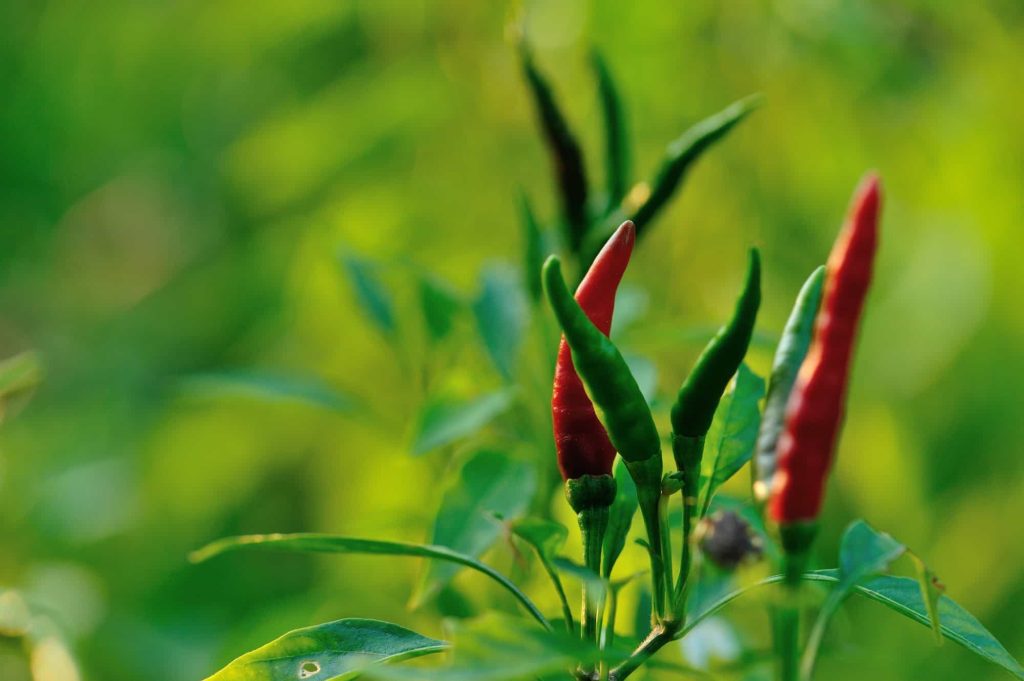
9. Squash
Nasturtium is planted in the garden to trap mostly squash bugs and aphids. You can’t be wrong growing your squash plant with this flower. That’s the best and proven way of getting rid of this major squash pest in your garden.
10. Marigold
Marigolds and nasturtium repel numerous squash pest insects. Marigold teams up with nasturtium to deter different types of pests. Pests wouldn’t dare come close to both of them in the garden. If you have a plant that easily gets destroyed by pests, you can plant them in between these two flowers.
11. Cucumbers
Nasturtium can deter pests and diseases too. That’s a plus for plants that easily get infected by diseases. Cucumber beetles, aphids, cabbage worms are some of the many pests that disfigure cucumbers. However, this should not be a problem for any gardener as nasturtium can be used as a trap crop for these pests.
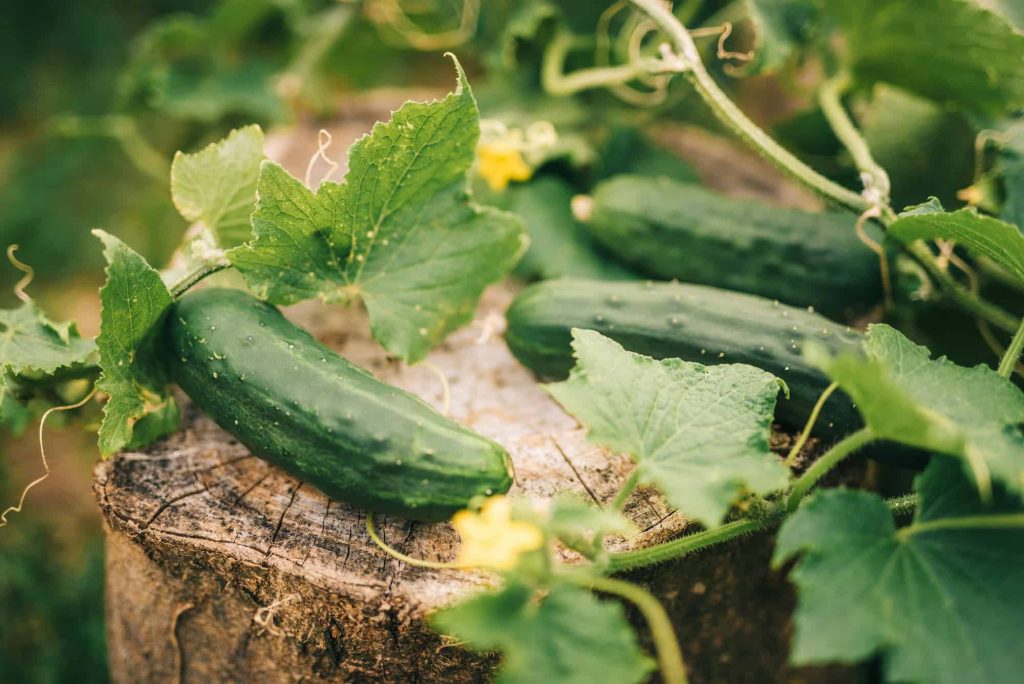
12. Tomatoes
Tomatoes get infected by fungal diseases during warm and hot weather. Nasturtium can deter tomato blight. Aphids suck up tomato juice and render them inedible. Nasturtium can be used as a trap crop to distract these pests from tomatoes.
What Not To Plant With Nasturtiums
Here are some plant(s) to not grow near Nasturtiums.
1. Fennel
Fennels don’t go well with several vegetable plants in the garden. Growing fennels with your nasturtium flower will stunt its growth. Avoid bringing them close together.
Nasturtium Companion Planting Guide
Here are some companion planting tips for growing Nasturtium in your garden.
- Seeds soaked in water are the best seeds to cultivate with
- Bury nasturtium seeds at a depth of half half-inch the soil
- A spacing of 12 inches is the recommended spacing for nasturtium flowers
- Nasturtium requires well-drained soil at 6.5 pH to thrive well
- Full sun is needed for nasturtium flowers to bloom. An exposure of 6 to 8 hours of direct sunlight is sufficient for nasturtium
- Water your nasturtium flowers once per week
- Nasturtiums thrive best on a neutral soil.
How do use nasturtium as a companion plant?
Nasturtium is a self-sacrificing plant. It is used as a trap crop to attract pests to itself instead of the plant it’s companioning with.
Where is the best place to plant nasturtiums?
Nasturtium doesn’t necessarily need rich soil to grow. Growing it in poor but well-drained soil is the best environment you can plant it. The foliage will outgrow its flowers if planted in rich soil.
Do Nasturtiums come back every year?
Nasturtium possesses large seeds and is easy to propagate. It is an annual crop.
Can marigolds and nasturtiums be planted together?
Growing nasturtium and marigold in your patch is tantamount to growing an army. Both plants team up together to deter squash which is an insect pest.
How do you climb nasturtiums?
Young climbing plants need some encouragement to successfully grow on a trellis. To make a young plant climb, you have to provide a trellis for them and allow them to grow in that direction.
Can you plant nasturtiums in pots?
Planting this flower in pots is the best method to encourage germination. The process is very easy. All you need to do is to pour some neutral soil into a pot and bury the seeds in it. Note that nasturtiums don’t appreciate growing in rich or fertile soil. It prevents its flowers from blooming.
What flowers can you plant with nasturtiums?
Nasturtium possesses a peppery sensation. Thus it is used to prepare soups, sprinkled on salads alongside other edible flowers. Flowers like borages, calendula, and purslane are the best flowers to cultivate with nasturtium.
Do nasturtium plants spread?
The seed of this flower is large enough that they can spread themselves and come back every year. Although you might need to manually spread the seeds as you can’t rely on self-propagation.
How far apart should I plant nasturtiums?
Spacing at least 10 inches apart is the appropriate separation for nasturtium plants.
Can you plant tomatoes with nasturtiums?
Nasturtium is an excellent companion for tomatoes. Tomatoes receive more from nasturtium than it contributes. This flower assists in repelling aphids from the tomato plant.
What vegetables grow well with nasturtiums?
Nasturtium will grow well with cucurbits like pumpkins, broccoli, radishes, e.tc.
Do nasturtiums need a trellis?
If you want your nasturtium plants to climb, support them with a trellis for better growth.
Are nasturtiums invasive?
Nasturtium can be invasive in warm areas. There are two varieties of nasturtium. One can be considered to be invasive.
Can I plant nasturtiums with peas?
Legumes are good companions for many plants. They go well with nasturtium too. However, peas are at the receiving end in this relationship. Planting nasturtium with peas will distract the aphids from peas. Nasturtium sacrifices itself for peas when planted together.
Is Nasturtium annual or perennial?
Nasturtium plants come back every year as it possesses large seeds that can be easily spread.
Are nasturtiums edible plants?
Nasturtium has therapeutic purposes. It leaves a peppery sensation on your tongue after consumption and is used to cook soups.
Conclusion
Nasturtium is a low-maintenance flower and can self-propagate. Its preference for poor soil reduces your labor on it.
You can replace the time you are supposed to spend preparing fertilizers for it to provide it with a trellis and train the plant to climb. Rich soil is a no-no for nasturtium as this will reduce the yield and stop its flowers from blooming.
More on companion planting:

